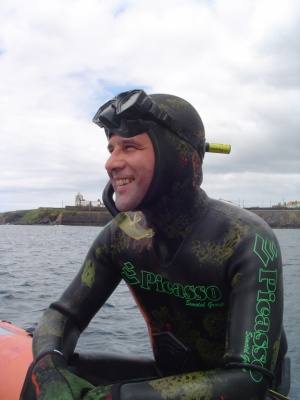Vaini, J.O., Domingues, R.R., Ferrette, B.L.S., Hallerman, E.M., Mota, K.G., Barreiros, J.P. & Hilsdorf, A.W.S. (2021) Global population genetic structure of the sequential hermaphrodite, dusky grouper (Epinephelus marginatus).
Aquatic Conservation-Marine and Freshwater Ecosystems,
31(8), 2119-2130. DOI:10.1002/aqc.3608 (IF2021 3,258; Q1 Marine & Freshwater Biology)
1.The dusky grouper Epinephelus marginatus is a large epinephelid species that occurs in the eastern and south-western Atlantic and western Indian Oceans. Late maturity, protogynous hermaphroditism, site fidelity, and overfishing have all contributed to its demographic decline. 2. Connectivity and demography within a broad sampling of dusky grouper populations throughout its distribution were assessed. To do so, genetic variation at 11 polymorphic microsatellite loci and a partial sequence of the mitochondrial control region (mtCR) were evaluated. 3. Two major mtCR lineages with a sequence divergence of 1.6% were found. The magnitude of genetic differentiation for mtCR among north and south Atlantic and Indian Ocean populations was high, with ΦST = 0.528. 4. DEST and results of discriminant analysis of principal component revealed significant microsatellite genetic differentiation between all collection areas. Significant pairwise DEST showed moderate (0.084) to very great (0.603) differentiation. The effective population size was low for all localities, ranging between 25 (Azores Archipelago) and 311 (Rio Grande do Sul). The overall effective population size was estimated as 299 (confidence interval = 215–412), and there was no evidence of strong or recent bottleneck effects. 5. Local and regional genetic structuring among dusky grouper populations is the consequence of the species' site fidelity, distribution across multiple oceanographic boundaries, and probably also of sequential hermaphroditism that contributes to the intensity of random genetic drift. 6. The spatial pattern of genetic structuring of dusky groupers is such that fisheries management and conservation of population genetic integrity will have to be pursued at the local and regional scales.

